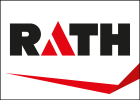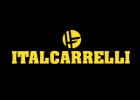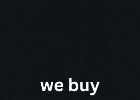- An article in the esteemed Science magazine suggests that as much as one percent of global CO2 emissions can be saved if electrified, and significantly more compact, technology is applied across the chemical industry.
- The groundbreaking technology from Haldor Topsoe produces synthesis gas (syngas), an essential building block in the production of polymers and chemicals.
- Researchers from Haldor Topsoe, Technical University of Denmark, Danish Technological Institute, and Sintex have been part of the development.
For the first time, a Science article An electrified reactor based on Haldor Topsoe’s groundbreaking technology will be 100 times smaller than the traditional natural gas-fired reactor, more energy-efficient, and able to reduce CO2 emissions significantly.describes a new and compact approach to producing syngas by steam methane reforming that can have a significant positive effect on CO2 emissions globally.
The research team has used computer simulations and lab testing to show that direct electric heating in combination with an innovative thin catalytic coating boosts both energy efficiency and catalytic efficiency. The improved efficiency saves CO2 in itself, but the real gain comes from replacing natural gas with electricity for heating the process to the 900°C necessary. The full potential is achieved when using green electricity from wind turbines or solar panels.
“Today, approximately three percent of global CO2 emissions stem from the production of syngas – that is comparable to the emissions from all aviation. Our research indicate that we can reduce emissions from syngas production by a third, equaling one percent of global CO2 emissions,” says Sebastian Thor Wismann, lead author and PhD student, Technical University of Denmark.
Another major benefit of the new technology is that it can reduce the size of the syngas reactor from a 30-meter-long six story building to a unit 100 times smaller. Together with the outstanding energy efficiency and low CO2 emission, this makes the technology extremely commercially attractive when fully developed.
“We see the electrified reactor as the next logical step for the chemical industry. With this approach, producers get a viable way to transform the industry going towards greener processes without increasing production cost,” says Peter Mølgaard Mortensen, Principal Scientist, Haldor Topsoe.
Haldor Topsoe is an industry leader in catalysts, proprietary technology, and process design for the production of syngas. The company helps customers produce syngas from natural gas and a wide range of alternative feedstocks, including waste and biomaterial. Its tailor-made solutions are always optimized to provide the highest carbon efficiency and purity while using the least amount of energy and resources.
The research is supported by Innovation Fund Denmark.



























